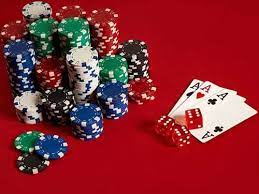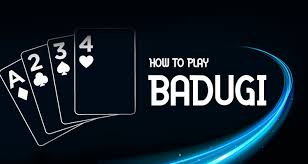BADUGI STRATEGY GUIDE FOR ADVANCE PLAYERS
Badugi is still a relatively new poker game which was developed in South Korea and did not make its way to the west until recently. As a new game, Badugi strategy is still being developed, and not many articles exist on the topic. The strategy I’ll share here is one I’ve used successfully at PokerStars.com $3/$6 and $5/$10 Badugi games. I can’t speak about how well this Badugi strategy guide will work at the lower stakes, or the higher stakes, though I assume it will work similarly but will require some small adjustments.
Winning Badugi strategy involves an aggressive, high risk approach to the game. You’ll often see Badugi strategy bloggers post about how the South Koreans play this game more aggressively than anyone else and how they’ll snow more often than other players. What most fail to mention is that South Koreans invented this game, have been playing it for years, and often give even good poker players a struggle. Everyone looks like a maniac when they’re caught snowing a few times. It is important not to label an opponent too quickly in Badugi, as you just might find you’re actually playing against a quality opponent who will soon adjust.온라인바둑이
While our Badugi strategy is not one of a maniac, it is one that involves snowing (standing pat without a Badugi), bluffing and playing a calculated high risk, high reward style. The truth is most Badugi players do not snow often enough, and when they do snow they pick horrible times to do so.
Perhaps the best Badugi strategy advice we can give, is before taking a seat scout your table in advance. Scouting the table allows us to both find desirable seat position and to get to know our opponents. A good seat is generally one where you’ll have position on the most active player on the table. The active players are the ones that are snowing more often, and they will give our Badugi strategy the most trouble. Let’s make sure we have position on them.
The odds of completing a one card draw to a jack high badugi is about 15% on each draw. The odds to complete the same with two draws remaining is 27% while the odds to completing it over the course of three draws is 38%. Therefore having position on and bluffing our opponents is often profitable.
To put this into perspective: we’re heads up and our opponent just drew one card on the second draw. We haven’t made a Badugi yet; do we draw here? There is a 73% chance our opponent won’t make a Badugi. Would standing pat here convince the player we have a Badugi? This depends a lot on the meta-game. Have we been caught in a snow? Has this opponent attempted to pick off a snow? These are facts to consider when determining if snowing here is +EV or not. Generally, when you’re first sitting down at a table, this might be an automatic snow (unless you have a read on the opponent that suggests otherwise).
I’ve already mentioned snowing quite a few times in this article, but because it is an important part to winning Badugi strategy, I’ll cover it in more detail. As a reminder, in Badugi “a snow” is a bluff that involves standing pat despite having not made a badugi hand. This might sound like a crazy play, but it works quite well and wins us more pots than a standard ABC pot odds type strategy wins us.
In Badugi, we want to snow fairly often, and though we won’t be able to keep the act of snowing up forever, we do want to avoid getting caught for as long as possible. Eventually, someone will look us up; while this is not a horrible thing, we do want to reduce the chances we’ll get looked up the best that we possibly can. For this reason, it is important we observe the table a while and note which opponents have attempted to pick off a snow in the past. When we do get caught in a snow, this still helps us in the long run, as it will force our opponents to call us down more often.
The most obvious time to snow is when our opponent is weak. For example, if on the second draw our opponent draws two, well this should be in automatic snow. He’s revealed he’s weak, we know it, he knows it and he knows we know it, so why continue any longer. Here we stand pat, bet and most often take the pot right then.
Another time we’ll snow, which is not so obvious to most players, is when we’re dealt four suited cards pre-draw. If our opponent is drawing at a Badugi in the same suit and discounts the K-Q, assuming we also don’t have the K-Q, he has only four outs to making a jack high badugi or better.
The third draw snow is often the difference between a winning and a losing player. Most players use this snow incorrectly by choosing a horrible time to attempt it. In a spot where our opponent has shown strength by making a raise after one of the previous draws, he’s already told us he likes his hand, and if we stay pat on the third draw, he’s much more likely to look us up. A better move in this spot would be to take a card and hope to outdraw him. Now on the other hand, if we were the aggressor through out and he hasn’t given us the indication he has a premium 3-card hand, then standing pat is far more natural, and a snow is often the optimal play.
When we’re caught red handed in a snow, we’re going to avoid spewing additional chips. I’m honestly amazed at how often a player will bet at showdown into a player who just stood pat after calling (not raising a bet). This player’s action is a clear sign he’s made a marginal or poor badugi, and while he is not willing to raise or bet, he has every intention of showing the hand down. In this spot, we’re going to save the bet by giving up the snow even if it means showing down the fact we were bluffing all along.
Badugi strategy is still a growing topic, and ultimately those with strong poker skills will excel at this game. By strong poker skills, we’re referring to a variety of skill-sets such as observation skills, odds calculation, understanding things such as the gap concept, when to bluff, odds such as pot odds, implied odds, reversed implied odds, fold equity etc. The list goes on and on, but ultimately a player with a good understanding of poker theory, fundamentals and advanced strategy should pick up Badugi after spending a little time at the tables. During the process of getting experience, strategy forums such as 2+2 are a good place to find Badugi strategy discussion. There is a Badugi skill vs luck debate going on between poker players but let us assure you that good players will dominate weak opponents when playing Badugi.




Comments
Post a Comment